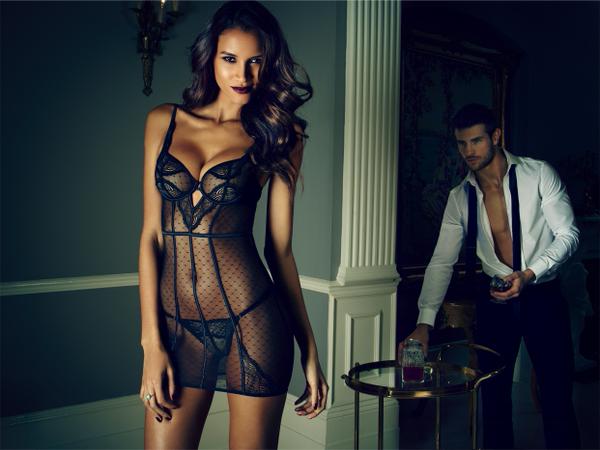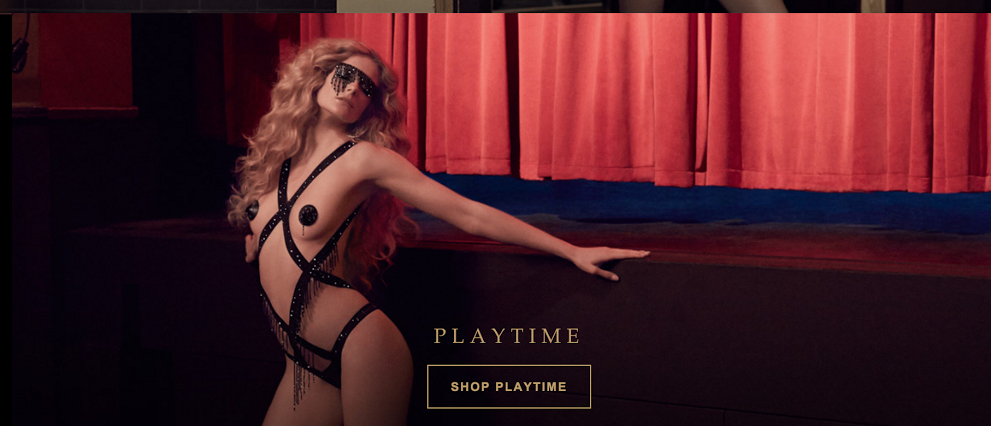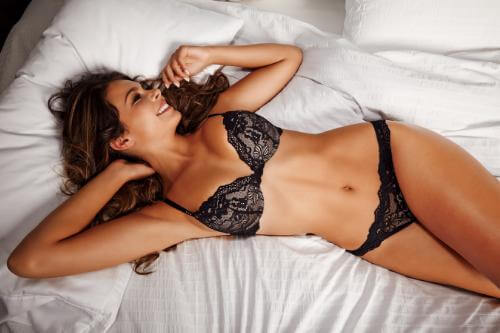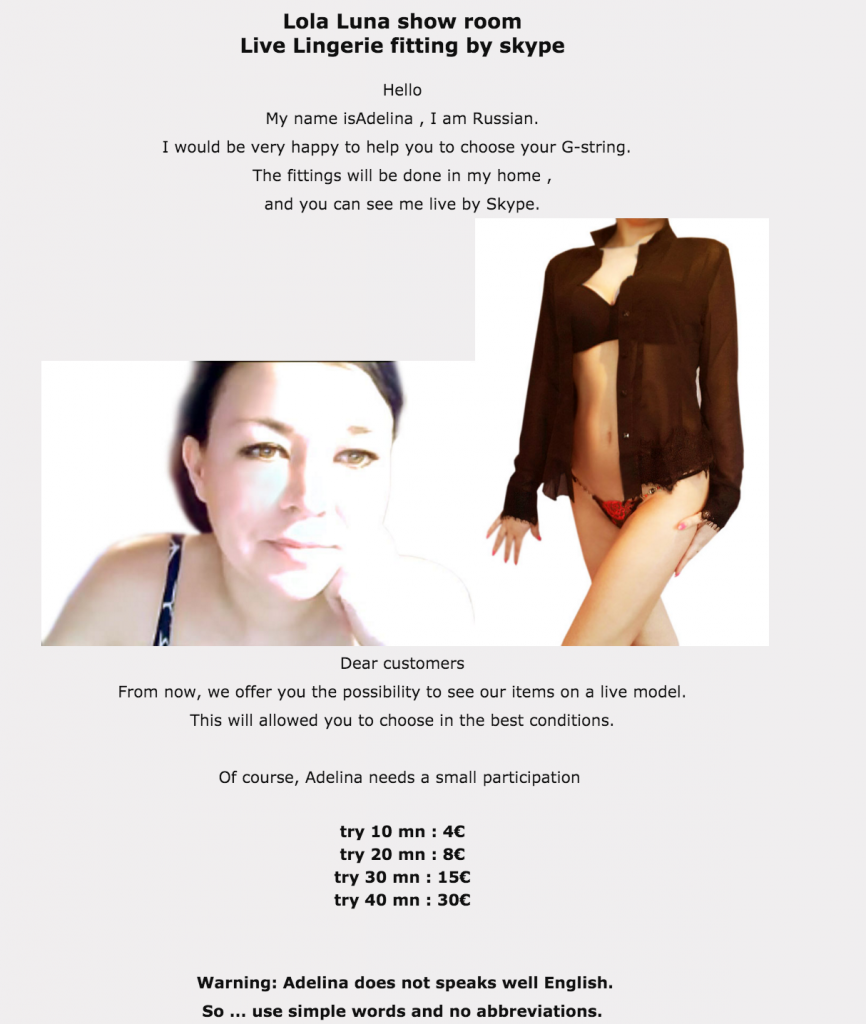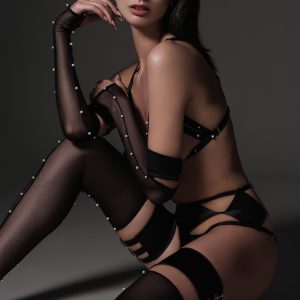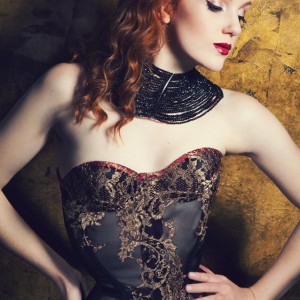Sex (Work) Sells... Lingerie
Editor's Note: Today's guest post is by Datura Divine, and is a response piece to an article we published last year on lingerie and pornography. In a private conversation on social media, Datura spoke of how many lingerie brands co-opt or appropriate sex worker imagery in their marketing and advertising campaigns while simultaneously shunning sex work and sex workers. I invited Datura to speak on that topic for TLA.
It's quite an old and familiar adage --- "sex sells." Recent studies suggest otherwise, but that's neither here nor there. I want to talk about sex and lingerie --- specifically sex, sex workers, and and how these things mix.
A couple of weeks ago, The Lingerie Addict posted a piece called 'Lingerie Is Not Porn' to Tumblr, which personally resonated with me. It was about how a lot of people seem to equate lingerie's mere existence on the female body to pornographic content. For example, Cora found that she could not go to her favorite sites while on a public network because it was classed as 'pornographic.'
The issue here is one many women have been forced to grapple with, navigate around, or just plain internalize: the Female body, and anything too closely related to it, is immediately deemed sexual, vulgar, rude, and pornographic regardless of context.
Clearly, that is unfair.
However, this article isn't about that very worthwhile discussion; it's about something that it stirred up.
Many people who agreed with this notion did so in a way that, honestly, makes me cringe. They stated that they didn't want to be seen as whores, strippers, etc. Logically, sex workers who follow the blog or read the article responded that these comments were whorephobic, and that the lingerie industry needs sex workers and the large amounts of money they spend on lingerie (which is true), but don't ever want to fully associate with them (also true), and the article was illogical because lingerie is inherently about sex (objectively false, but I digress).
For the sake of discussion, let me explain the term whorephobic, which is very familiar to a sex worker but not so much to someone who is not in the field. 'Whorephobia' is the revulsion, slandering, persecution, and avoidance of sex workers on the basis that selling sex or sexuality for money is dirty, morally wrong, and a source of social filth. These perceptions form the basis of oppression and discrimination against sex workers, and even fuel violence committed against them. For more information on whorephobia, you can visit here and here.
So we arrive at the purpose of this article.
I oppose the idea that lingerie is for sex, not only in that I disagree with some of the points raised by fellow sex workers, but in that I feel pressured to have sex or to think about sex by lingerie companies. Is lingerie sensual? Sure. Silk chiffon and satin please the sense of touch. Artful lace and fluid body lines please the eye. Is it sexual? That is for the wearer to decide.
If you follow independent and/or luxury lingerie brands, chances are you've seen an ad showing a woman decadently sprawled in strappy black lingerie, earrings peeking from her glossy showgirl curls, body bathed in red light from an out of frame bulb. She may be seated in a high-end hotel room, looking wry but effortlessly detached, while a man in a suit stands nearby, frozen in the act of either removing his coat or undoing his tie. Or the brand may have hired a male model or two to be tied up in masks while models pose over them with thigh high boots, whips, and this season's newest basque. I've seen all of these themes in the past month alone.
These images are all enticing and racy, but it may not have occurred to you that they intentionally allude to the models being sex workers. Escorts. Peepshow girls. Pro-Dommes. The industry not only benefits from sex workers' money, it also uses their imagery to peddle product.
This wouldn't matter if not for the fact that these same brands never want to admit these ties for the sake of appealing to a civilian (read: non-sex worker) public. Yet, every season, it seems like they push the envelope by co-opting sex work more and more.
For instance, Agent Provocateur really loves to use these themes, so much so that some of their 'shop girls' seem to have a twitter presence reminiscent of some cam girls and fetish models complete with intimate, candid selfies. Their campaign with 'Ex-Shopgirl' Paloma Faith really exemplifies my point.

Hmm, Amsterdam, anyone? Via: The Agent Provocateur Twitter
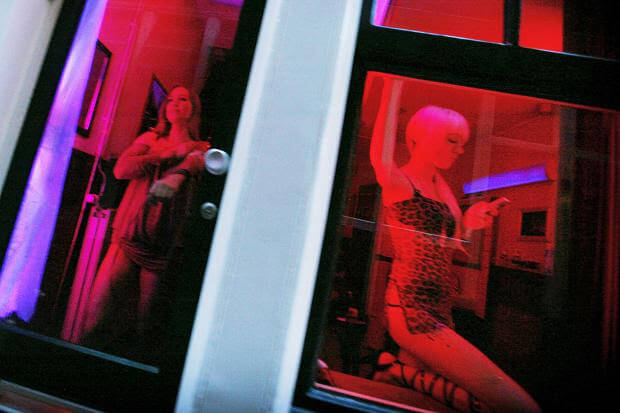
Actual sex workers in Amsterdam. Credit: David Boeber for The Times.
The Red Light District vibe is strong with a lot of AP's campaigns, and campaigns from other brands. Here, Paloma rotates in a window, bathed in scarlet light, on display. But hey, don't get the wrong idea! She's no sex worker! That would be dirty. She's a shop girl! AP also likes to call its strappy, body-baring pieces 'showgirl playsuits', which seems to be a sanitized way of saying that it's high-end stripper/exotic dancer attire like body harnesses.
That would make sense, since it definitely looks inspired by it, down to the way they're marketed.
Meanwhile, AP has partnered with The Anonymous Sex Journal and asks fans to submit their 'sexy stories.' I can't help but recall reader-submitted letters to Playboy magazine, which reminds me...
Frederick's of Hollywood revealed a special edition of their BIOFIT bra --- the Playboy version.
Biofitxplayboy.com has since gone down, but if you look, you can still find some of the bras for sale. While pretty much everyone knows that Playboy is an adult industry seated brand, one of the official releases read:
"The aesthetic of the intimate's collection is inspired by Playboy, a global design-driven lifestyle brand with a longstanding history of involvement in the art and fashion space, including collaborative projects with Marc Jacobs, Dolce & Gabbana, Cushnie et Ochs, and SUPREME, among others."
Oh, right, just a clothing brand, then? No porn or centerfolds, no. Playboy is just a nice, clean, luxury intimates brand and nothing more.
This lays out a pretty clear pattern, but sometimes the grey area between sex worker and model gets even more unclear.
While revisiting French micro-lingerie brand Lola Luna's site a few months ago, I noticed an odd addition that really didn't sit well with me. The site now offered 'live fittings' wherein a model would put on a g-string or ouvert on camera, ostensibly to 'show what it looked like.' However, this seems a lot like a softcore cam-session to me. It doesn't help that the user pays in ten minute increments, either. It doesn't take that long to show someone a pair of underwear that is already clearly represented on the site.
Honestly? It makes me uncomfortable, because this is a very weird grey area. It makes it feel as if the online store for Lola Luna is just a front for sex work, or that the people who run Lola Luna see an opportunity to exploit the appeal of cam voyeurism for a few extra bucks with the help of a model. Very suspect.
Can I just shop for lingerie without seeing the models being presented more and more like undercover sex workers? Can the lingerie industry reconcile its ties to us? Sex workers are, due to stigma and at times illegality, constantly marginalized to the point that they can lose housing, bank accounts, legal representation, and safety. So it's beyond irritating to see so many companies blithely using our image to sell lingerie. It's a very mixed message, because their models are increasingly being made to look like callgirls, PSOs and fetish models, while at the same time reinforcing this whorephobic feeling of '"it's alright! They're not really prostitutes*!"
Many readers may at this point feel put-off because they don't want to be associated with sex workers (or 'whores' and 'prostitutes' as they might rudely put it. *By the way, both words are slurs used in the defamation, shaming, and persecution of sex workers and should not be used by non-sex workers), but that's absolutely not my point.
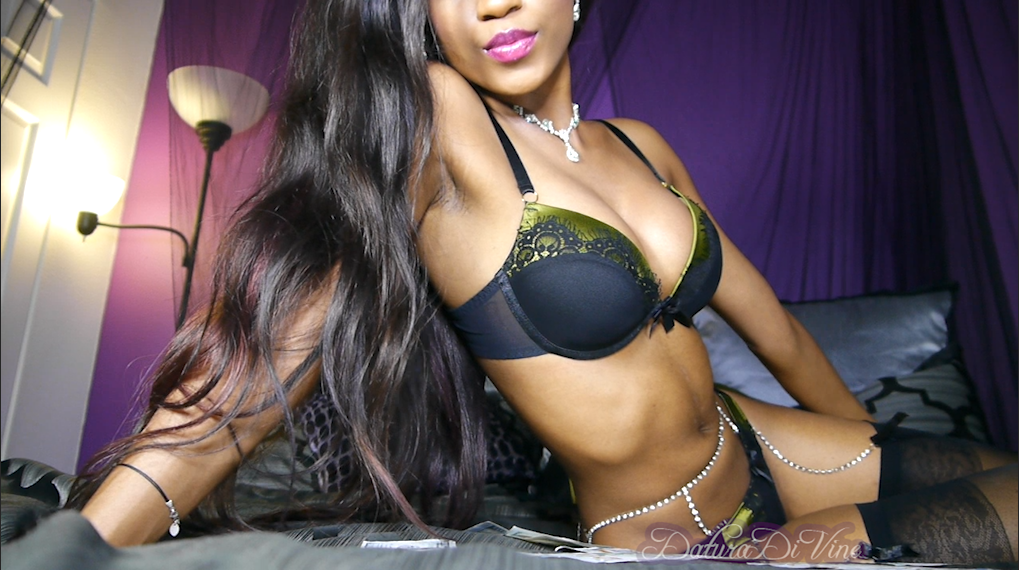
The author, pictured wearing the Bordelle Malena bra and thong.
I, too, would like to just shop for lingerie's sake without having the context or pressure of sex or sex work forced upon me. But I also want to point out that this co-opting and appropriation of sex workers is harmful and both exploits and further stigmatizes us. It is not okay to subtly perpetuate the idea that strippers and escorts are too 'yucky' to openly associate with, yet at the same time use our jobs and our imagery to sell our reality as a satin-tied fantasy to the average person --- all while we fund a huge portion of sales whether for work or pleasure (or both).
Keeping us in a marginalized position can make us invisible victims of discrimination, manipulation, and exploitation. Perpetuating the idea that we are not socially acceptable to associate with is exactly why banks, legal entities, payment processors, crowdfunding sites, and homeowners almost never have our backs, ridding us of a social safety net most other people take for granted.
Now, I concede that many of these managers, marketers and photographers may not be entirely cognizant of the themes upon which they pull when they do their photoshoots, but I don't think they're completely innocent either. And I don't think it's wrong per se to utilize sex work themes in lingerie branding. My issue is that actual sex workers are not used, acknowledged, or credited. The most one can expect is for a bespoke brand to claim a burlesque model as their muse, and the classist and contextual rift between burlesque and stripping is a completely different can of worms.
How hard would it be to make a professional Dominatrix a featured model in a campaign, retweet a cam girl's promo where she's wearing her new gifted chemise, pay a stripper to show off a new strappy playsuit, or openly invite opinions from escorts as to what pieces they and their clients enjoy best? It wouldn't be, but it would require a world that saw sex workers as worthy of respect and acknowledgement.
The way I see it, sex workers inspire, promote, and support the lingerie industry in such a major way. It's high past time it recognized our contributions and stopped selling its odd brand of whorephobia.





